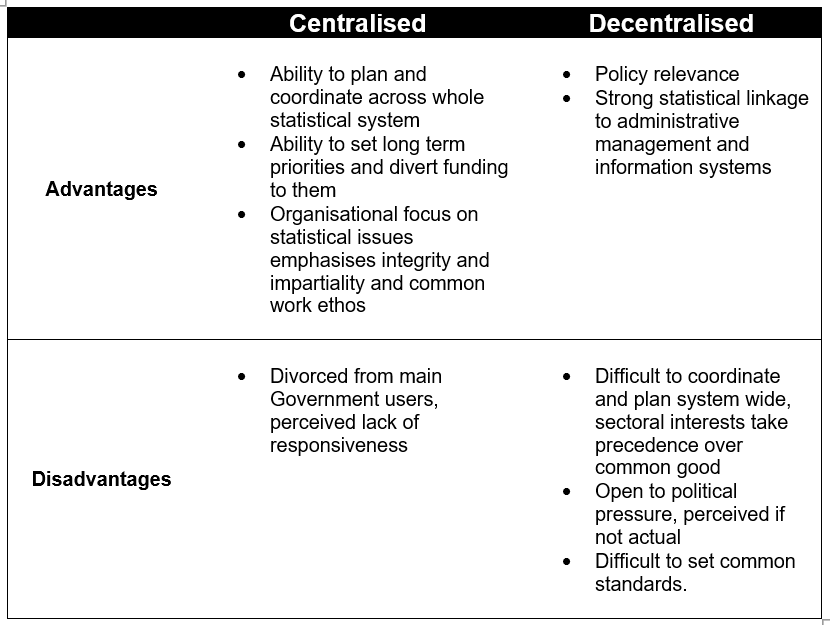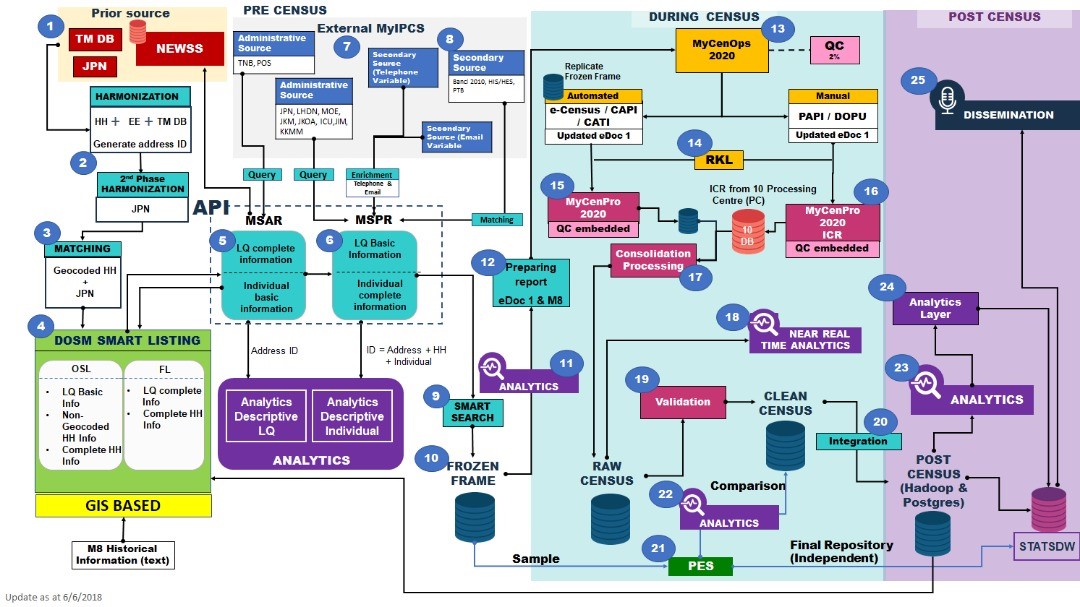Statistical systems are described as either centralised or decentralised depending on the extent to which responsibility for delivering official statistics across the range of government activities lies with the central institution. There are strengths and weaknesses to both the centralised and the decentralised models.
Statistical systems are said to be centralised when all, or most, of the products of the statistical system are produced and disseminated by the central organisation. A good example of this is the Department of Statistics Malaysia (DOSM) which produces almost all of the country’s statistics. As per DOSM Annual Report 2018, DOSM has released 305 publication and statistical release, covering economic and social statistics. DOSM is an independent agency and has been given full authority by the government to determine what should be produced and in what manner. DOSM was established in 1949 under the Statistics Ordinance 1949 and known as Bureau of Statistics. After independence, the ordinance was repealed and replaced by the Statistics Act 1965 (Revised 1989) and the Department was known as the Department of Statistics Malaysia. Meanwhile, Census Act 1960 was passed by the Parliament and implemented by DOSM in conducting censuses.
Systems are said to be decentralised when statistics are produced by many different ministries and agencies according to which has responsibility for that sector such as health statistics being produced by the Health Ministry. An example of a decentralised system is the United States of America where some eighty Federal agencies produce statistics and where there is no central statistical agency.
 adib
adib 

 Database Setup: Open & Closed Source Software?
Database Setup: Open & Closed Source Software?